Day 1 of a 3-day Winter & Brecks tour in Norfolk. It was a rather wet and increasingly windy day, but as usual nowhere near as bad as the apocalyptic forecast from the Met Office and BBC Weather, and we made the most of the opportunities to get out, particularly when the rain stopped in the afternoon.
Given the forecast, we headed for Titchwell this morning where we could get out of the weather in the hides if need be. We cut across inland on our way there, and stopped to look at a flock of finches whirling round over a field corner sown with a bird seen mix. They were all Bramblings, maybe a hundred or so of them – we could see the white up their backs and the brighter orange shoulders of the males as they twisted and turned in flight. Then they dropped into the crop and disappeared. A couple of Stock Doves were on the verge nearby.
It was drizzling when we got to the car park at Titchwell, so we donned our waterproofs. A quick look in the trees on one side produced a brief Woodcock, which unfortunately disappeared in before we could get a proper view and another was lurking very deep in the sallows on the way to the Welcome Hub, too tricky to get an angle on it, so we decided to try our luck along Fen Trail.
The feeders behind the Visitor Centre were quiet, so we carried on round towards Fen Hide. There was no sign of any more Woodcock along here at the moment and the Tawny Owl was hiding in its usual ivy-covered tree but had secreted itself completely today, probably trying to get out of the rain, so the best we could see was half a wing!
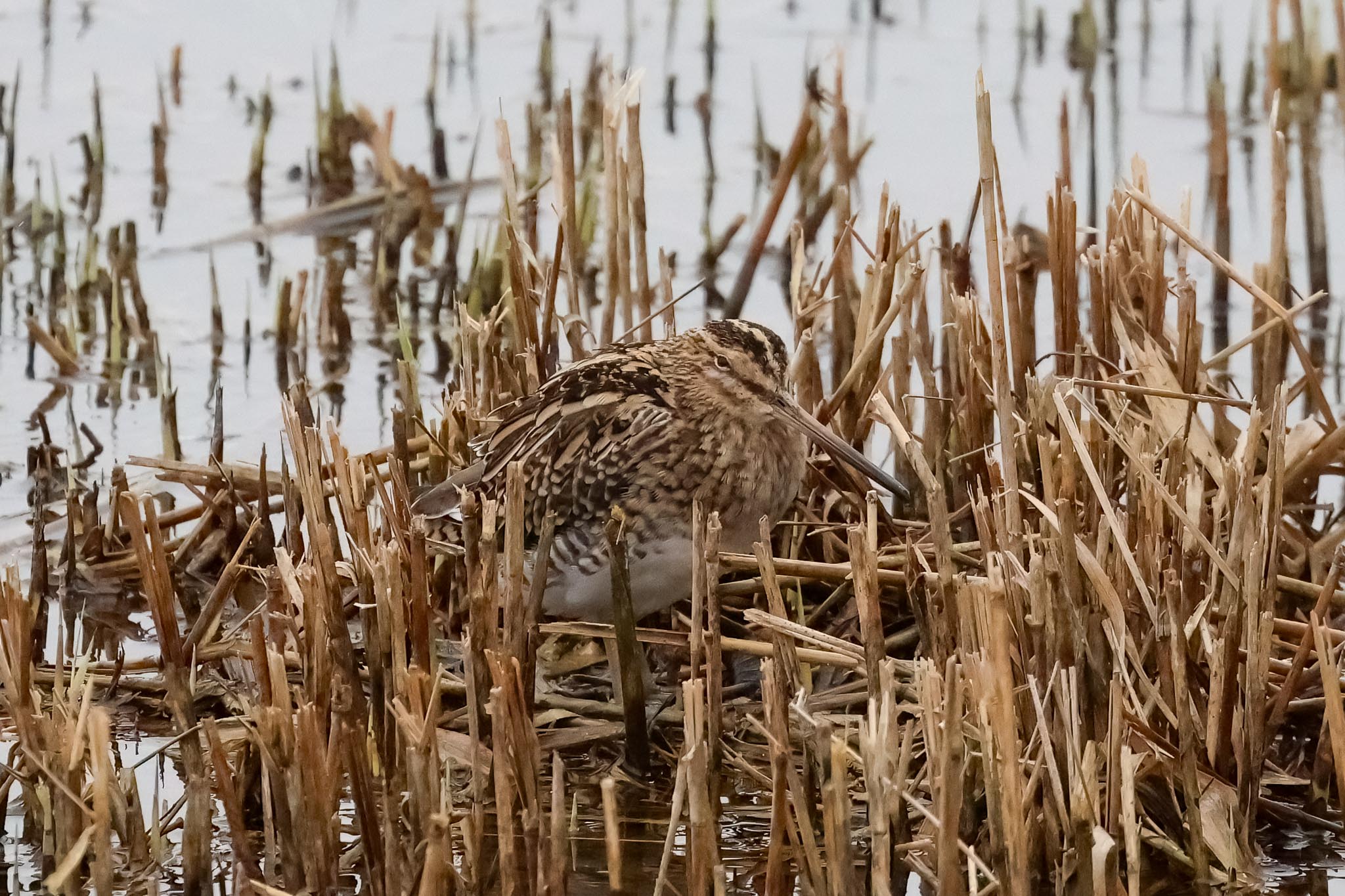
The path to Patsy’s has had some new gravel put down so we were able to get round there despite the rain. There were a couple of Common Snipe in the cut reeds in front of the screen, which we got in the scope, and a selection of Gadwall, Mallard, Coot and Mute Swans out on the water, but the Marsh Harriers were keeping down today and there was no activity over the reedbed.
As we made our way back round on Meadow Trail, we found another Woodcock hiding under the sallows. Again, it was not easy to see but we managed to find a spot where we could get the scope on it. Most of the group managed a look before it disappeared deeper in. The Woodcock were still very active this morning, so we figured we might stand a better chance of getting one more static later in the morning.
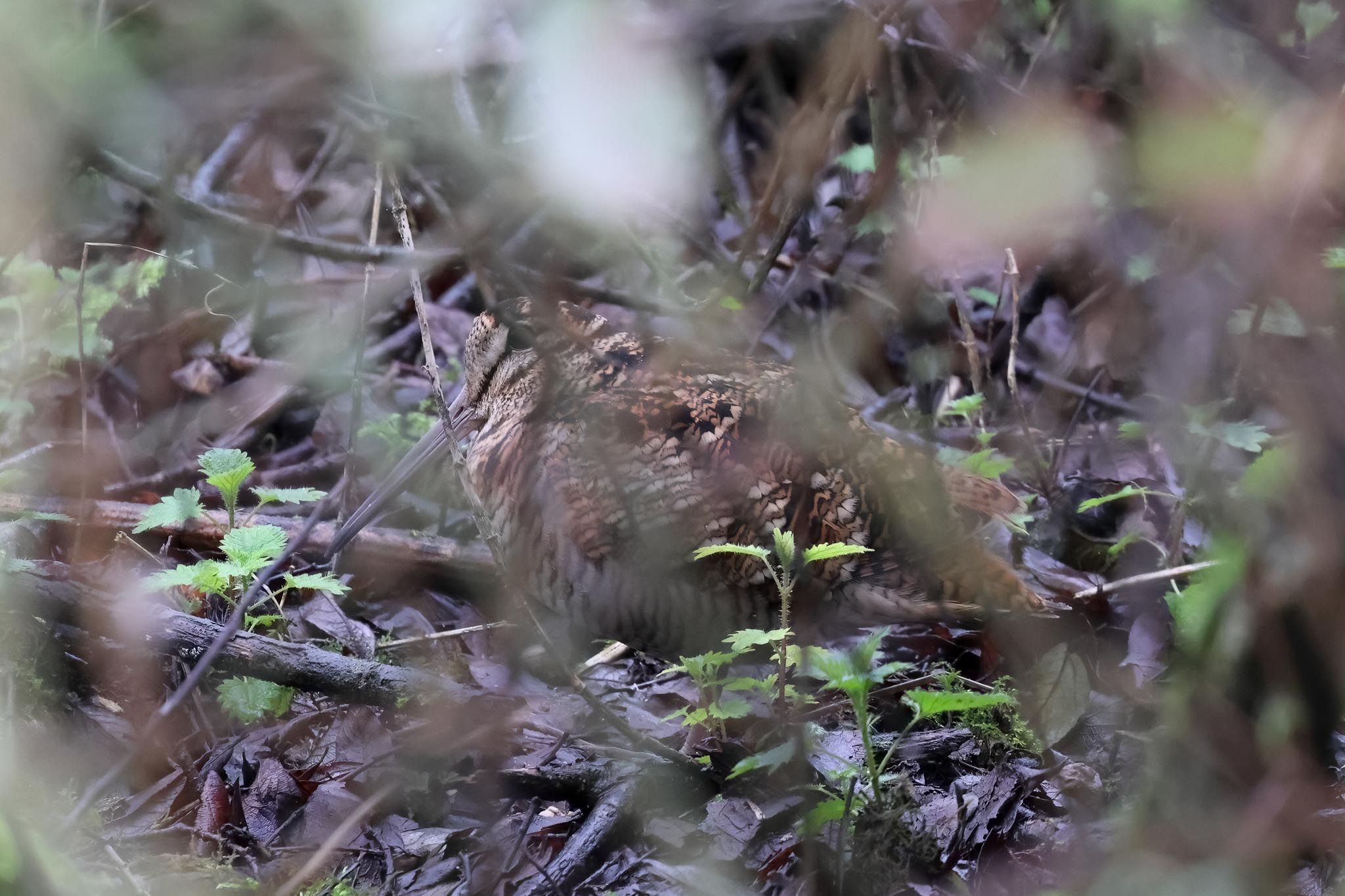
There was no sign of the Water Rail in the ditch by the main path – there was even more water in there this morning, with all the rain, which probably didn’t help. A couple of Cetti’s Warblers shouted at us from the reedbed and a quick scan of the reedbed pool produced a few Common Pochard, Tufted Duck and a couple of Little Grebes.
It was still drizzling steadily though, so we pressed on to Island Hide. There was a digger working out on the main bund today, and the increasing wind didn’t help, so there had been a bit of a clearout on the Freshmarsh. A large group of Avocets were on the island nearest the hide and flew round before landing again. There were a few Black-headed Gulls too and a single adult Mediterranean Gull with a nearly complete black hood dropped in for a quick bathe before flying off inland. A lone Lapwing was on the bund nearest the main path.
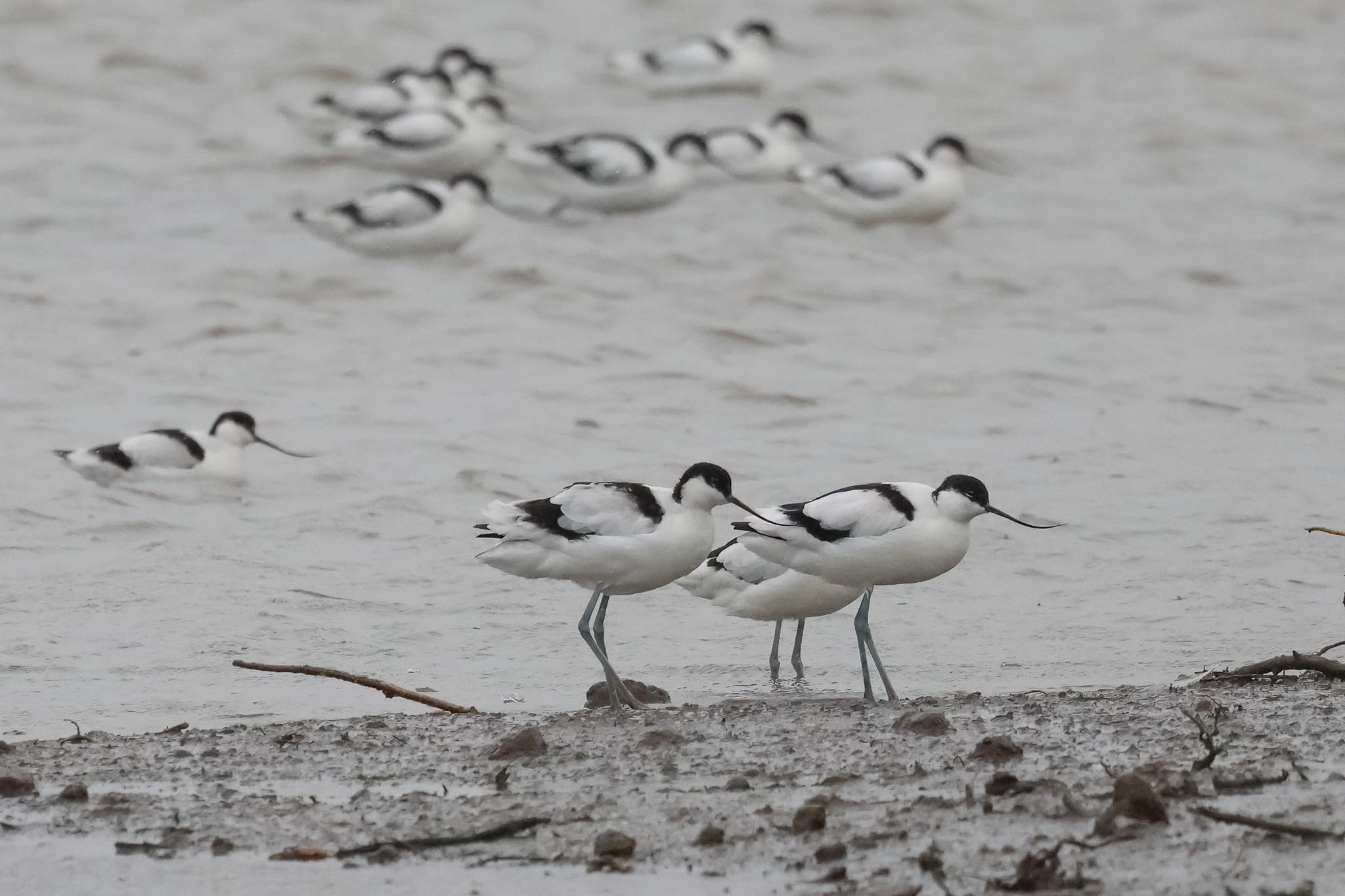
There was still no sign of the heavy rain which was forecast, so we decided to press on and see if we could get out to the beach. There were a few ducks, Teal and Shoveler, in the NW corner of the Freshmarsh, as well as a small flock of Dunlin feeding busily in the shallow water. A single Common Snipe was on the bund by the Dunlin and another five flew up from one of the weedy clumps on the island.
There were a few waders out in the channel on the Volunteer Marsh, so we stopped for a quick scan – Redshank, Curlew and a Grey Plover which we got in the scope. There were fewer birds than usual on the Tidal Pools too – a couple of Black-tailed Godwits in a small pool towards the back, more Wigeon on the islands but only a single drake Pintail in with the Shoveler. Turning round, we realised the rest of the Pintail had decamped to the saltmarsh and were feeding on the grass today, presumably to get out of the wind.
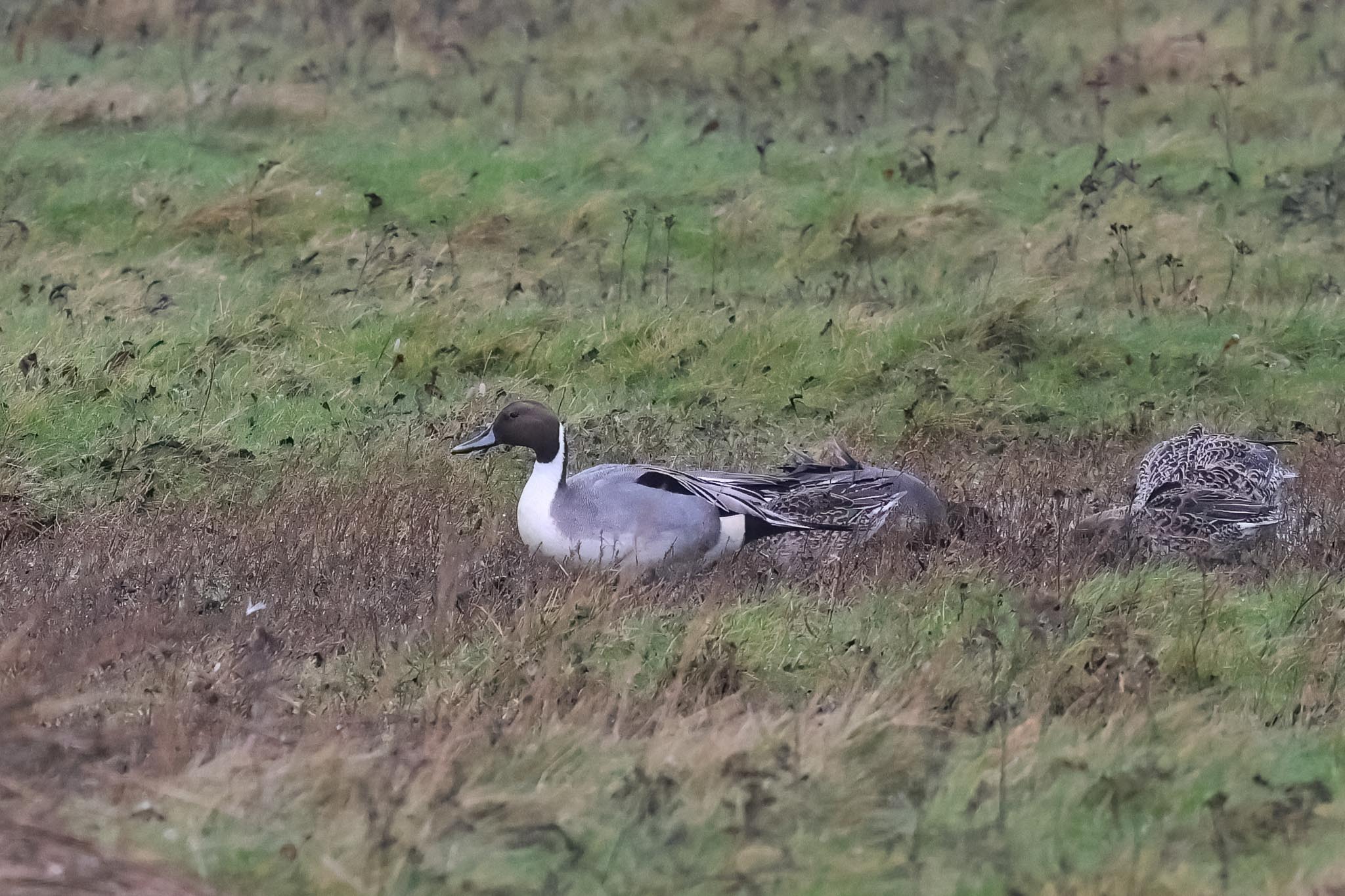
The dunes provided us with a little bit of shelter to scan the beach and sea. There were several Bar-tailed Godwits along the shoreline and Turnstones and Oystercatchers on the mussel beds. Three Sanderling flew past. Looking out to sea, there were a few Common Scoter close in and a Great Crested Grebe just off the beach in front of us. A couple of pairs of Red-breasted Merganser more distantly off towards Brancaster were harder to see as they kept diving and the scope was constantly getting wet from the drizzle.
On the way back, we were walking into the wind and the drizzle had a sting to it, so it was a case of heads down and make a beeline for the shelter of the trees. Back at the Visitor Centre, there were now lots of birds on the feeders, so we made use of the shelter (which was no being used) to watch the comings and goings. There were several Bramblings on the ground here now, including two or three brighter orange males and a couple of greyer females. A Greenfinch dropped down onto the feeders but the Redpoll we could hear calling in the trees didn’t come in.
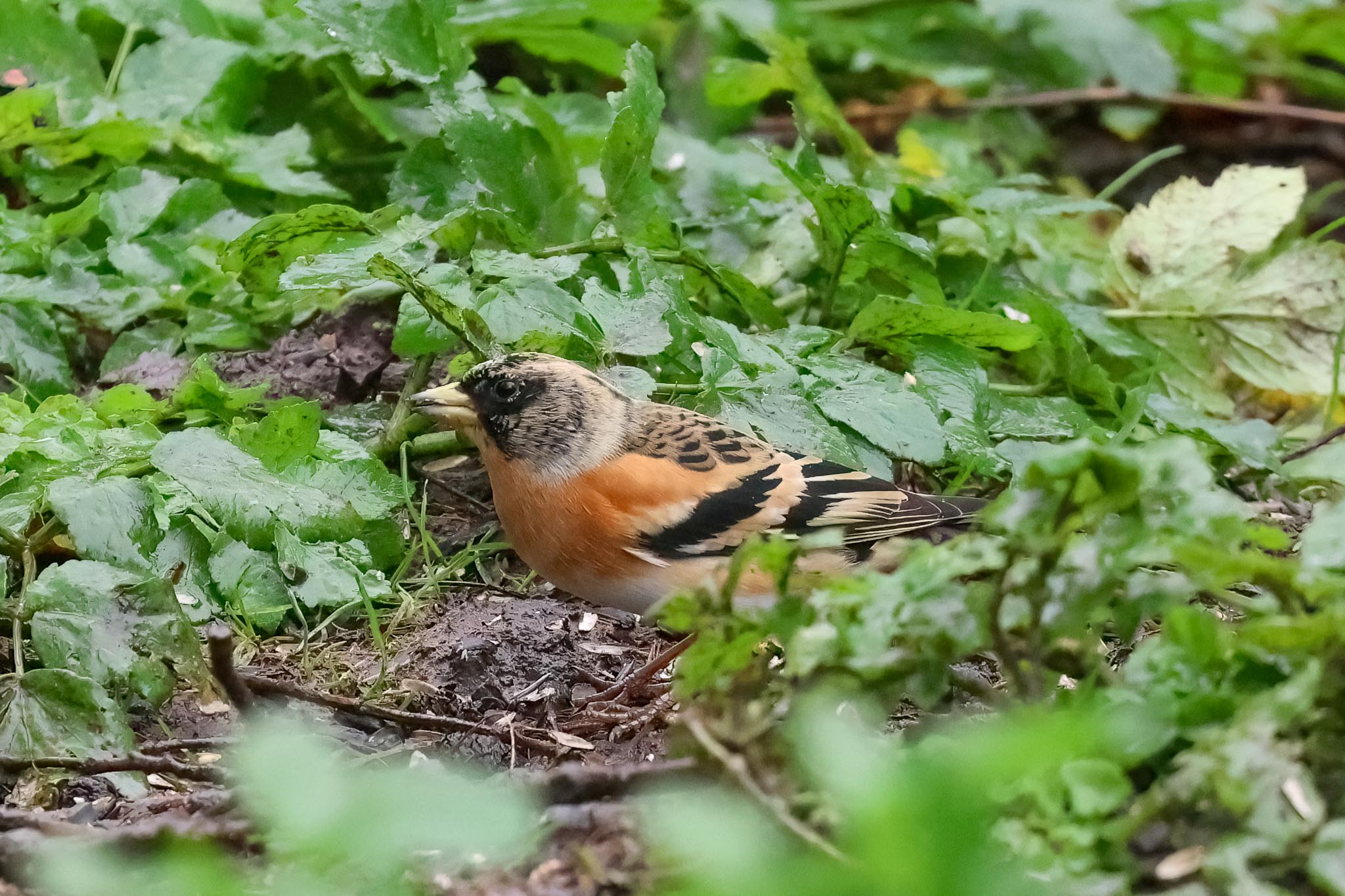
It was time for lunch and it was still drizzling, and we were very kindly allowed to eat our packed lunches inside the cafe at the Visitor Centre. As we walked back to the minibus to collect our lunches, we spotted a Woodcock lurking under the trees close to the path. They can be surprisingly hard to see, as they are so well camouflaged, but we had fill the frame views in the scope now. It was asleep at first, but then woke up and looked at us, assuming it was well protected and we probably couldn’t see it. We could see droplets of water on its back and after a while it shook itself down and walked further in behind some branches.
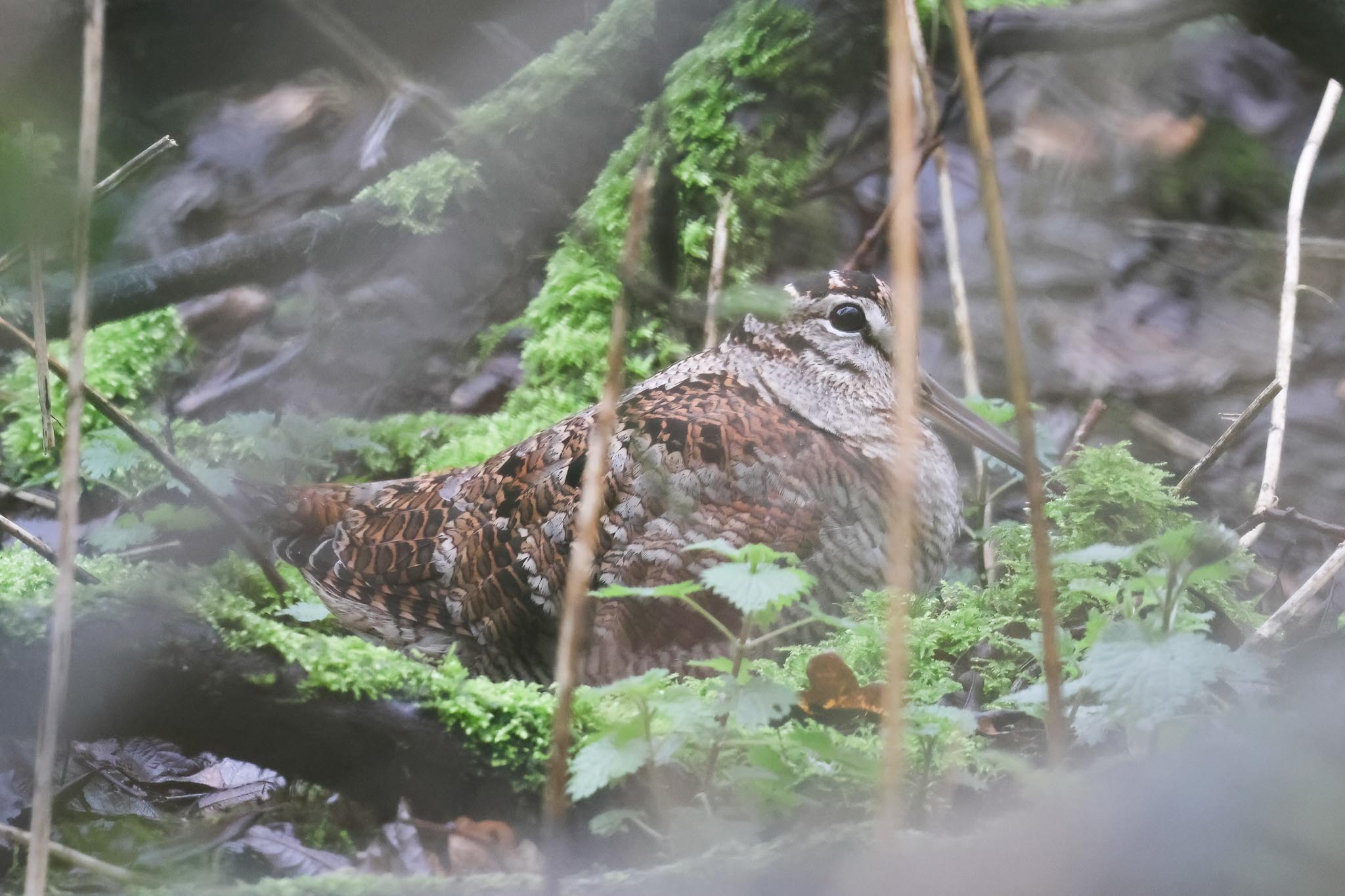
There had been no sign of the heavy rain which was forecast all morning and we slightly worried it might just be late arriving, but after lunch we went back outside and it had stopped. On the way back to the minibus, the Woodcock was back where it had been before. As we drove east along the coast to Holkham, there were more raptors out now – a male Marsh Harrier quartered a field next to the road, a few Red Kites hung in the air, and several Kestrels were perched on the wires.
As we neared the Park, we looked out towards the pines and could see a flock of white birds flying up out of the trees in the middle and gliding round over the grazing marshes. We parked in a layby and got out and confirmed our suspicion they were Spoonbills. They landed on the grass and we got them in the scope, twenty-two of them. There were four different Great White Egrets on the small pools on the marshes too.
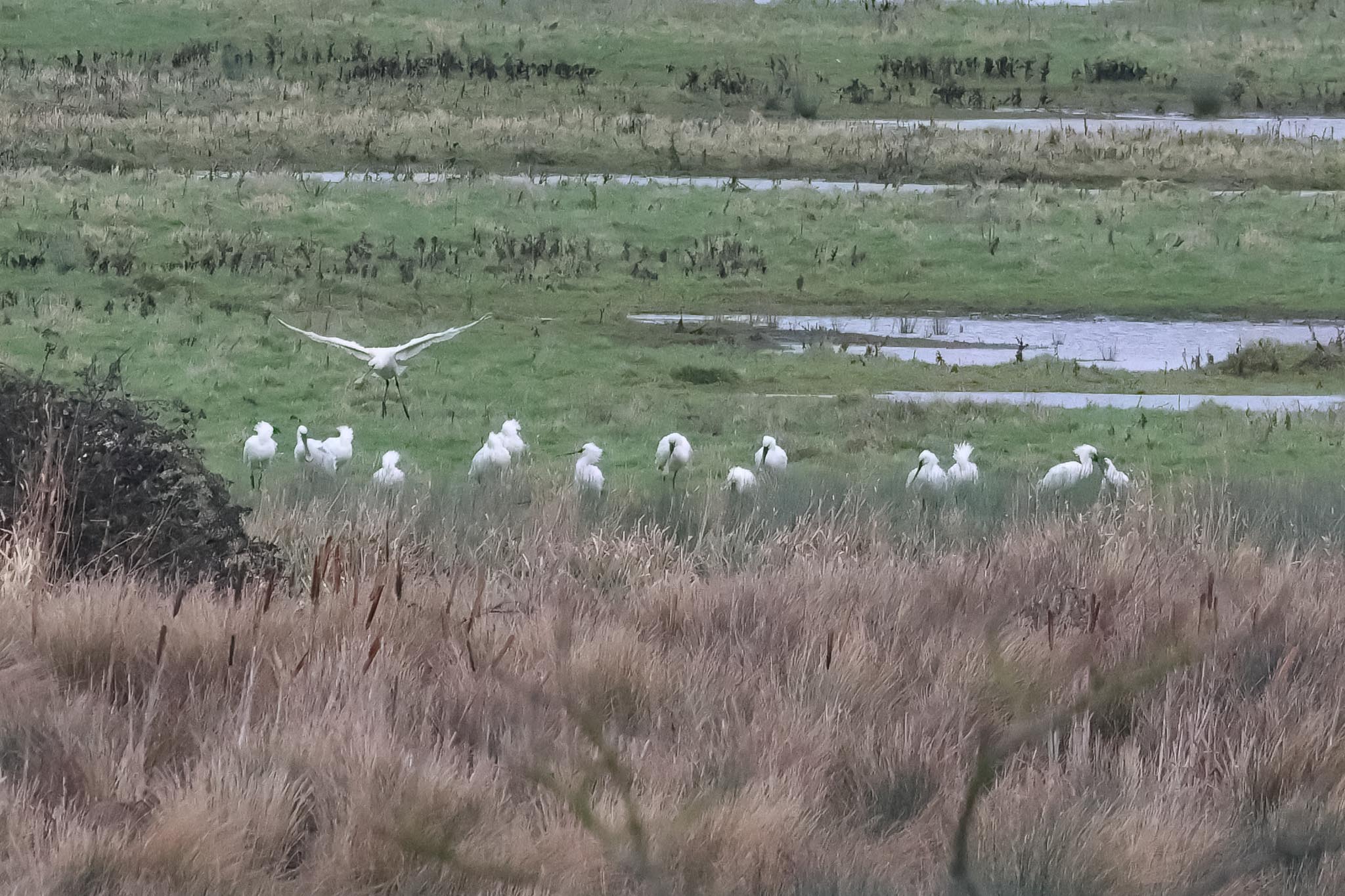
Further off towards Burnham Overy, we could see a larger group of up to a hundred Russian White-fronted Geese loafing in a grassy field with some Pink-footed Geese and through the scope we could see their pink bills with the white surround around the base.
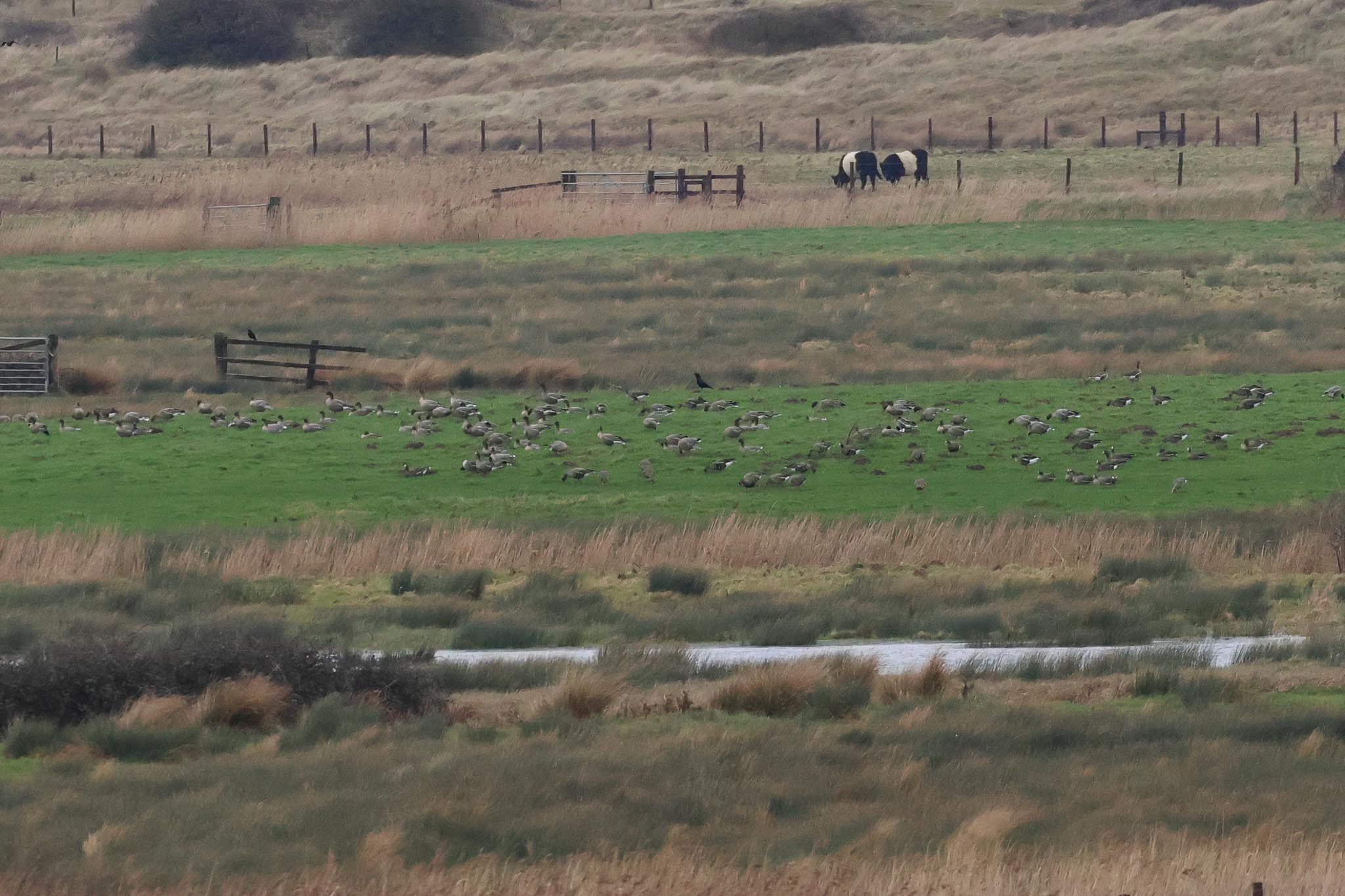
There is a lot of water on the grazing marshes by Lady Anne’s Drive now, and still good numbers of Wigeon and Teal enjoying it, but we couldn’t see anything else in with them. We walked through the pines and out onto the saltmarsh and turned east. The Shorelarks had mostly been on the beach to the west in recent weeks, but had been reported back in the cordon this morning, so we thought we should try there first and hope for the best.
There were lots of Brent Geese out on the saltmarsh, mostly the regular Siberian Dark-bellied Brents but looking through we found a single Pale-bellied Brent with them. A small group of Rock Pipits flew round calling and landed briefly and a few Skylarks were feeding out on the saltmarsh too. It was still rather grey, and it started to drizzle again now but thankfully it was just a shower and quickly stopped again.
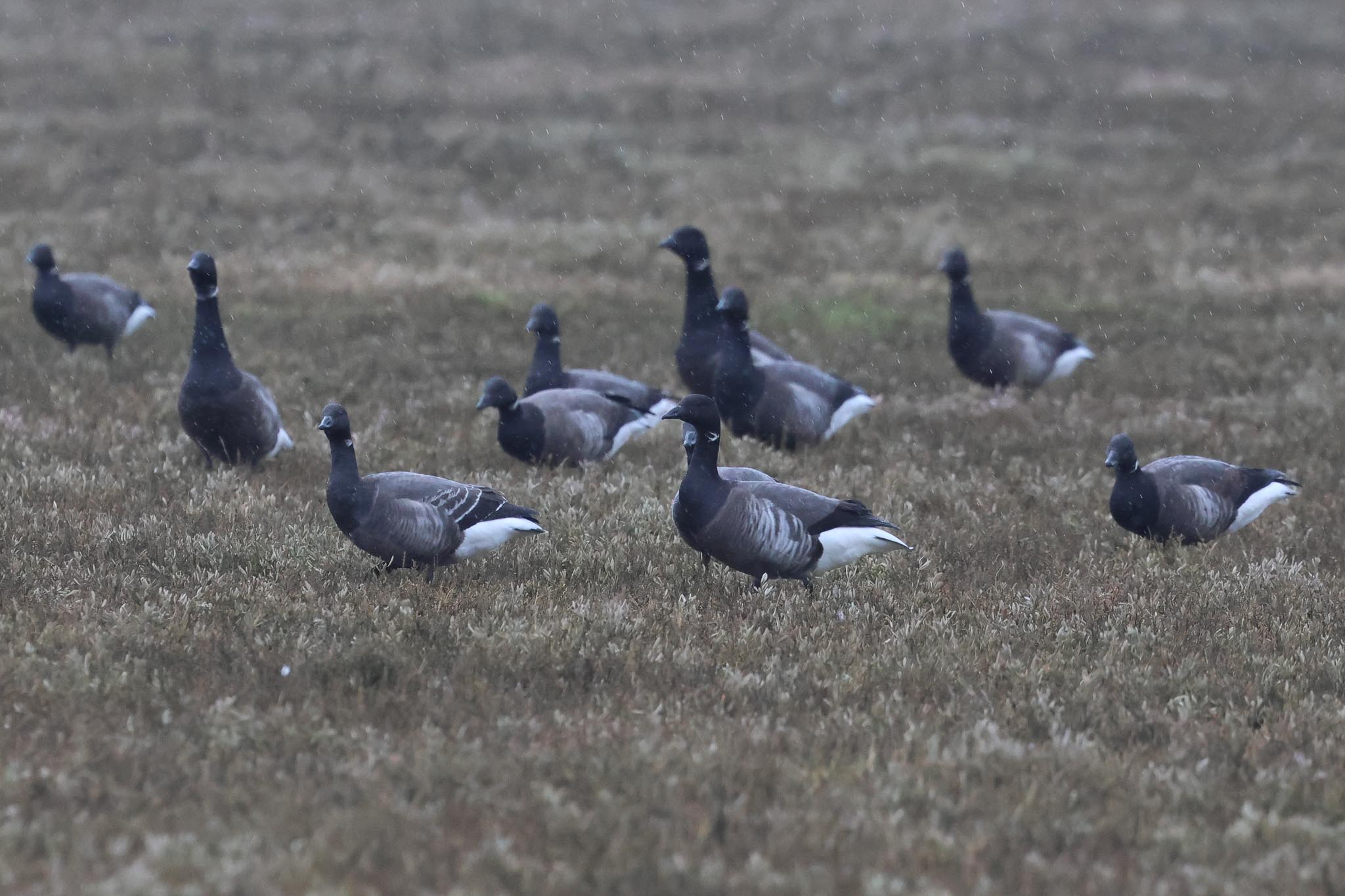
As we got out to the cordon, a couple who had walked out ahead of us waved us over. There were nine Shorelarks down at the far end and we got them in the scope, getting a good look at their yellow faces and black bandit masks. They were quite mobile and flew up and round several times, landing back each time in a different place. Fortunately we had chosen the right direction to walk!
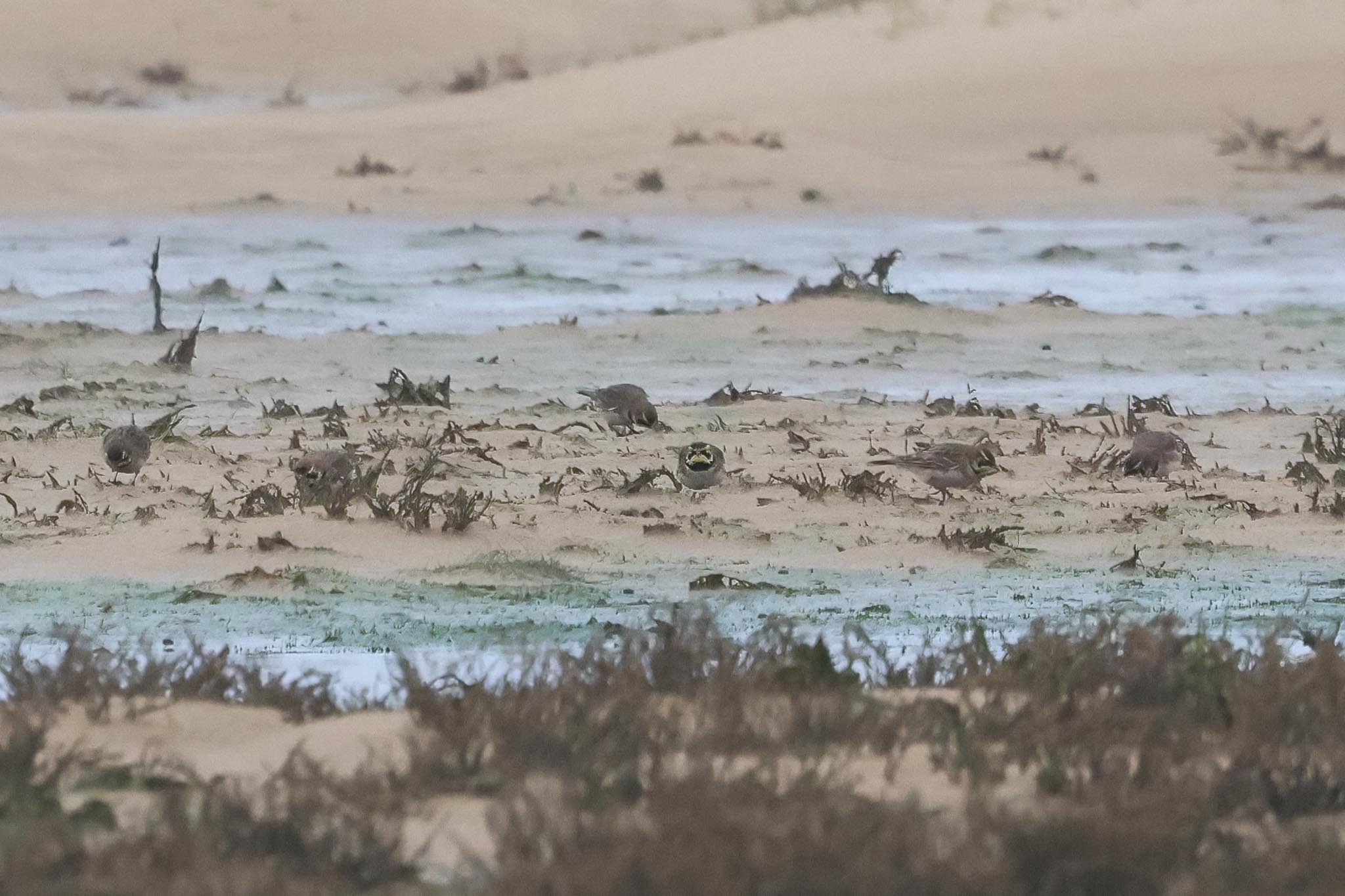
Having enjoyed the Shorelarks, we decided to have a quick look out to sea. There has been a nice mixed flock of scoter off Holkham this winter, although numbers dropped sharply when most of them moved back west towards the Wash two weeks ago. The Black Scoter continues to be reported though, and had been a couple of hours earlier, although all we have been able to locate here since the number of Scoter plummeted have been a couple of lookalike Common Scoter with more yellow than usual on their bills. Still, we hoped we might at least find one or two Velvet Scoter in the flock, but when we got out to the beach and into the lee of the dunes we found the Scoter were very distant and visibility was very poor. There was no chance of picking out a Velvet, let alone a Black! We did have nice views of a couple of female Common Scoter which were very close in and there were several Red-breasted Merganser and a couple of Great Crested Grebes not too far out in the bay too. A few Sanderling were running up and down on the shore.
Looking back at the cordon, the Shorelarks had disappeared now, so we walked back around the far end and over to the lee of the pines and walked back. When we got back to Lady Anne’s Drive, it was still not raining but we were still rather damp from earlier. It was very cloudy and grey though and the light was starting to go. Everyone quite liked the idea of heading back for tea and cake so we decided to call it a day and head for home. We had done remarkably well, given the weather.
















